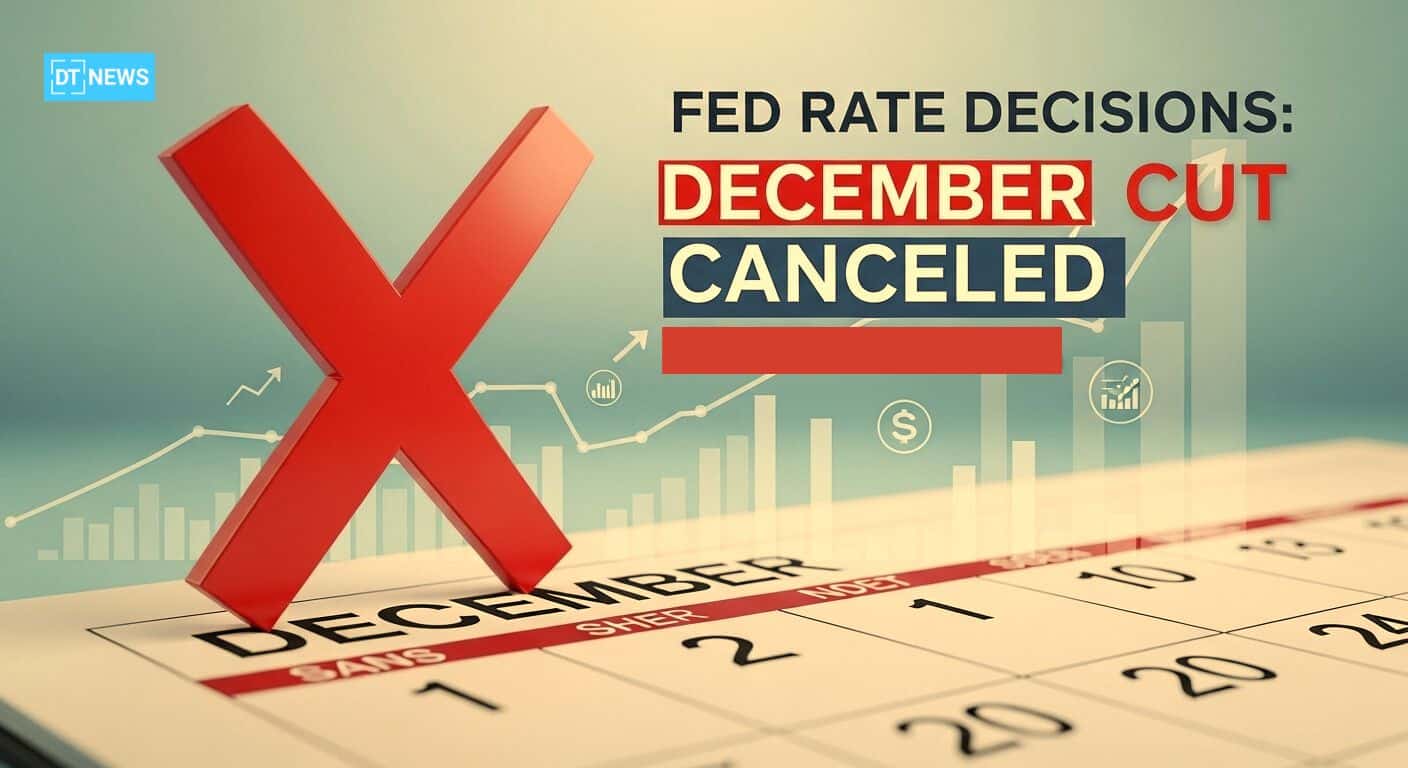This article was first published on Deythere.
The Federal Reserve has cut interest rates by 25 basis points, reducing the target range to 3.75-4.00%. But investors were caught off guard when Chair Jerome Powell said a December rate cut is “far from a foregone conclusion”. This caused a sudden shift in futures markets, basically wiping out any chance of another rate cut before the end of the year.
What would be the impacts of this Fed rate decision as crypto markets head into 2026? This changes the situation for risk assets, especially in crypto where liquidity, yield and macro sensitivity are intertwined.
Repricing Expectations: Markets Shift Gears
Before the latest FOMC meeting, many thought a December rate cut was a done deal. However; after Powell’s comments and the divergence within the committee, markets removed that assumption.
He said;
“There were strongly different views today. And the takeaway from that is that we haven’t made a decision about December, and we’re going to be looking at the data that we have and how that affects the outlook and the balance of risks.”
The CME FedWatch tool shows probabilities of a December cut dropping from near 100% to near 0%, with the “hold” scenario becoming the base case at around 70%.
A hike probability for December is now in the 20-30% range and January 2026 is 18.5% for a 25 bps hike. The market is repricing for a more cautious Fed and anticipating more uncertainty ahead.
Meanwhile, according to reports, the Fed also announced it will end its balance sheet runoff starting December 1, from allowing Treasuries to roll off to reinvesting maturities to contain tightening pressures.
Liquidity Squeeze, Real Yields and Risk Premium Recalibration
With rate cuts off the table, real yields like nominal yields minus inflation, are firm, tightening the discount rate for long duration, risk assets like crypto.
Higher benchmark rates and slower balance sheet normalization tightens the U.S. dollar and reduces capital flows into speculative sectors.
Crypto faces a tougher backdrop as marginal capital that would have flowed into yield or carry strategies is now more attracted to risk free alternatives.
Ether, Solana and smaller altcoins being more sensitive are looking more vulnerable. Bitcoin being the safer risk proxy in crypto is viewed as the safer bet.
Bloomberg notes that after Powell’s comments, Bitcoin extended losses as markets rebalanced. Hence, the impact of the Fed rate decision on crypto is not just about the rates themselves but how much capital can flow into crypto when macro yield alternatives become more competitive.
Rotation Dynamics: Bitcoin Over Alts
In times of macro stress or policy tightness, capital tends to rotate to the most liquid and trusted assets. Within crypto, that means Bitcoin. Altcoins and smaller layer-1s with weaker fundamentals or emissions burdens are more exposed to rate regime changes.
Sources said the tighter liquidity environment and higher discount rates often weigh on high-beta risk and long-duration narratives tied to far-dated cash flows.
Investors may want to reduce exposure to many alts and prefer to hold Bitcoin as a relatively safer hedge against policy volatility. That rotation intensifies dispersion; projects with strong cash flows, yield capture or minimal emissions will outperform, while speculative or low-revenue tokens will suffer more.
The dynamics also impact how trading funding and leverage behave. Perpetual funding rates may widen, borrowing costs rise and margin stress hits those with weaker balance sheets or high leverage.
Protocols and ecosystems with solid fundamentals will better navigate volatility under the impact of the Fed rate decision.
Valuation Stress on Protocols and Token Models
Higher discount rates reduce the present value of future cash flows which is crucial for token protocols that promise long-term yield, staking rewards or network growth. When the benchmark interest rate rises, yield and growth expectations must be re-calibrated downwards.
Mining and infrastructure projects are particularly sensitive. as increased capital costs, higher discount rates and potential strain on leverage or treasury allocations become top of mind.
Stablecoin float, staking yields, liquidity across exchanges and protocol-level revenue generation become important signals.
Protocols with real yield capture, low emissions and scalable business models might see more interest from investors under a regime where macro headwinds are tighter.
As markets enter 2026; it seems crypto will be filtered through macro uncertainty, rate trajectory and tokenomics as well as fundamentals.
Glossary
Real yield: The yield on investments adjusted for inflation; essential for comparing returns across macro regimes.
Discount rate: The rate used to convert future cash flows to present value; higher rates reduce valuations of growth assets.
Rotation: The movement of capital from riskier assets to safer ones; under shifting sentiment or macro stress.
Perpetual funding rate: A mechanism in perpetual swap markets that balances long/short positions.
Tokenomics: The economic design of a token or protocol; including supply, rewards, utility and distribution.
Frequently Asked Questions About How Fed Rate Decisions Affect Crypto Markets
Why did markets kill the December rate cut?
After Powell’s comments and internal dissent at the FOMC, futures markets repriced probabilities of further cuts downward.
How does the Fed decision affect crypto liquidity?
No near term easing so capital that would flow into risk assets is more constrained. Real yields stay firm and stretch investor patience for speculative bets.
Why is Bitcoin more resilient?
Because of its liquidity, institutional depth and perception as a benchmark risk asset, Bitcoin holds ground better when macro pressure rises.
What happens to protocols under this regime?
Protocols with strong fundamentals, yield capture and minimal emissions will better withstand valuation pressure; speculative projects will see sharper downside.



















































































































